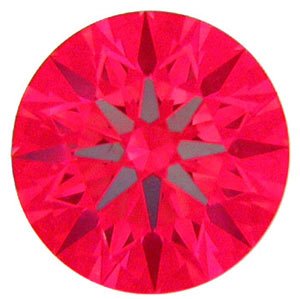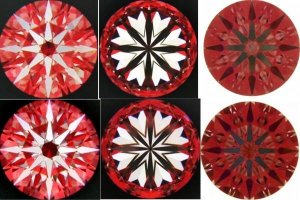I looked at a diamond yesterday at a jeweler and asked to see it under an H&A scope. It is graded AGS0/ HCA 1.1. He brings me out a viwer (no taller than 6 inches). When I looked at the diamond I did see very good hearts and arrows. Two things struck me though that I need to ask about.
1. When looking at the arrows, I did not see any space between the hearts and the v (I'm assuming that is the arrow from the reverse side). I could definitely seperate the heart from the v but they seemed to slightly overlap rather than produce a small space btwn. them.
2. The color produced from the scope included black, white, and pink. From what I've learned from many the wonderful internet sites out there including this one, I'm supposed to focus on darker reds and pink means that light is escaping and that the facets are acting as windows rather than mirrors (?). Could this possibly be due to the type of scope? The ones I see pictured online look to be a foot tall and this was a small cheep plastic one. The diamond did sit on a black base and the tube I viewed it on was pink so maybe this had anything to do with it?
W/o having a light test done on it I want to make sure its brilliance is as good as possible.
Should I still consider this diamond for the reasons above?
1. When looking at the arrows, I did not see any space between the hearts and the v (I'm assuming that is the arrow from the reverse side). I could definitely seperate the heart from the v but they seemed to slightly overlap rather than produce a small space btwn. them.
2. The color produced from the scope included black, white, and pink. From what I've learned from many the wonderful internet sites out there including this one, I'm supposed to focus on darker reds and pink means that light is escaping and that the facets are acting as windows rather than mirrors (?). Could this possibly be due to the type of scope? The ones I see pictured online look to be a foot tall and this was a small cheep plastic one. The diamond did sit on a black base and the tube I viewed it on was pink so maybe this had anything to do with it?
W/o having a light test done on it I want to make sure its brilliance is as good as possible.
Should I still consider this diamond for the reasons above?












300x240.png)